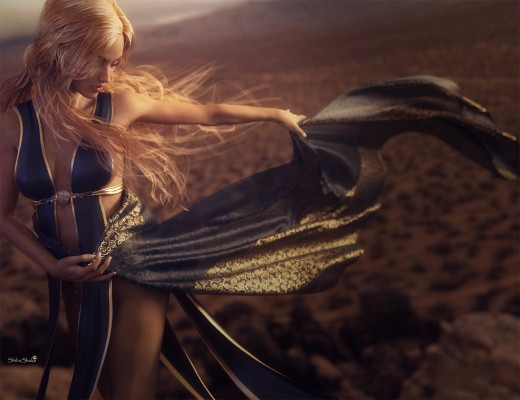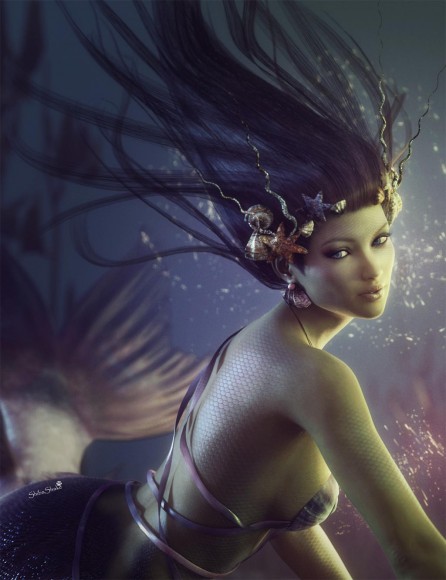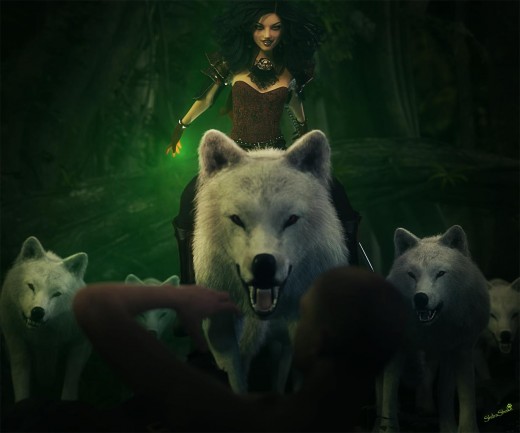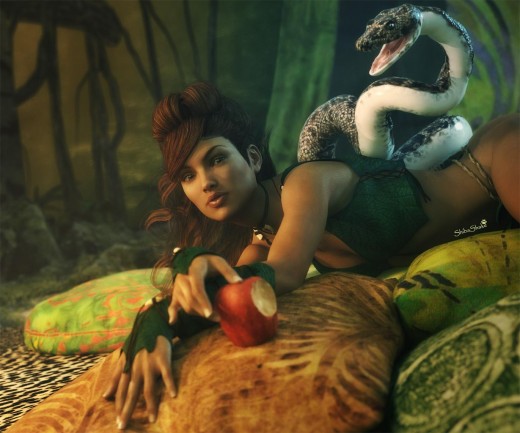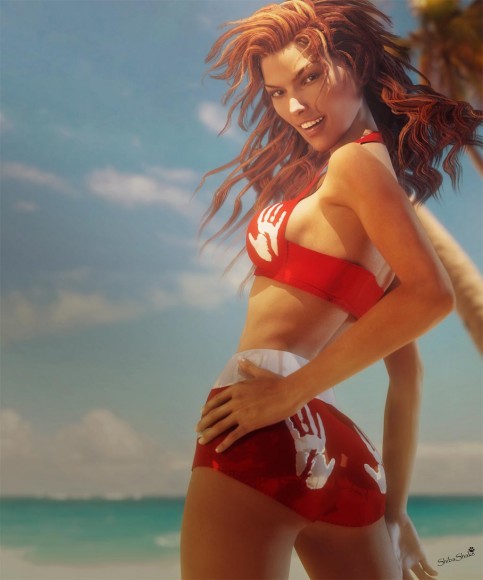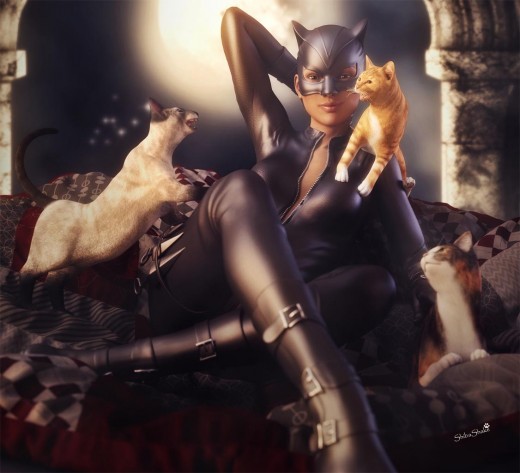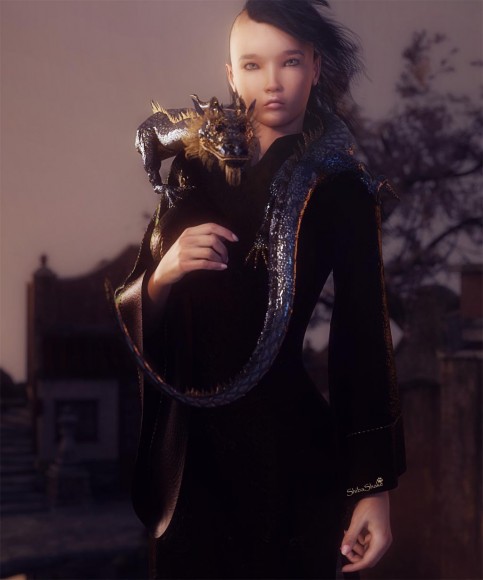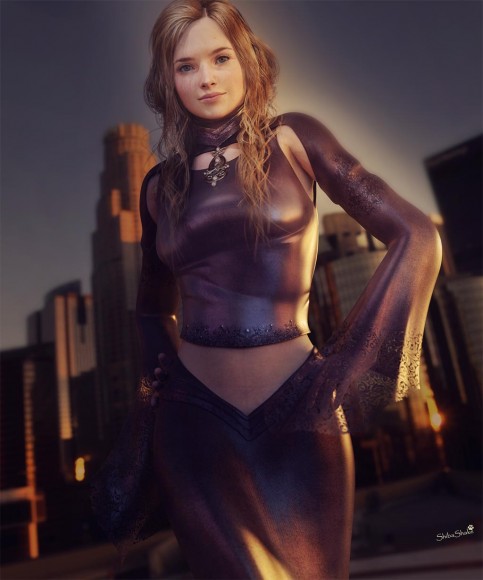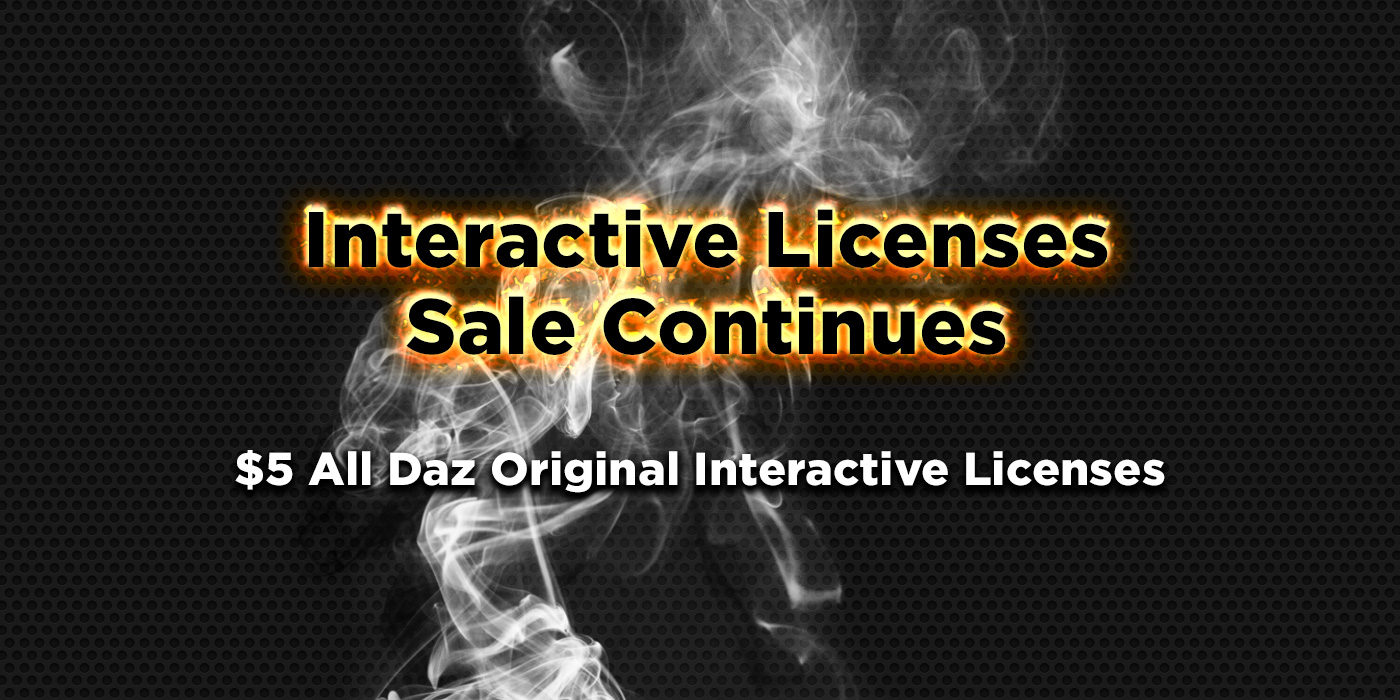1. Pd Iray Shader Kit 1
The Pd Iray Shader Kit 1 by parrotdolphin is one of my favorite products of 2015. It allows me to not only make previous 3Delight materials look good in Iray, but also effectively use many made-for-Poser cloth materials, with just a few clicks.
There is also the ability to add a metallic sheen to my cloth surfaces, or to add cool metallic patterns. In the example image below, I added the gold metallic sheen to the trim of the Fantasy Wrap dress, as well as the gold metallic patterns to the cloth she is holding.
Most clothing sets that I use have a combination of mostly cloth, metal, and leather parts. Therefore, combined with basic Iray metal shaders and Khory’s Iray leather shaders (described later), I can make most clothing sets render well in Iray without too much effort.
2. AtmoCam for Iray
I use AtmoCam for Iray by Marshian in almost every one of my Iray images. AtmoCam allows me to render light-rays, create atmosphere, fog effects, underwater effects, and more.
In the mermaid image below, I used AtmoCam to create my underwater effect. To do this, I rendered a light layer using the AtmoCam AzureSea setting and the AtmoCam HDR Env Render Setting.
AtmoCam also works great for creating spell effects or providing atmosphere around emissive light surfaces. In the wolf pack image below, I rendered a volumetric light layer for a green point light on her right hand. This casts a nice green glow behind and to the side of my figure. The wolf pack is created using Wolf 2.0 by AM.
3. UHT Hair Shaders for Iray
Just as the Pd Iray Shader Kit allows me to make cloth materials look good in Iray, UHT Hair Shaders allow me to make 3Delight and Poser hair look good in Iray with just a few clicks. I especially like all the extra controls for adding displacement maps, back-scatter, shine, transparency, and more.
I have tried other hair shader products, but so far, I like the render results I get from this one best. Note however, that these shaders work best on hair surfaces that are mapped to straight hair pieces. I usually continue to use the original hair textures for scalp surfaces and surfaces that have special (non-straight) hair patterns. Nevertheless, even there, I can still apply displacement, shine, and other hair options, to the original textures.
Another important thing to note is that the transparency options may not work on all hair surfaces. In these cases, we will have to edit the original transparency image maps, and strengthen it in an image processing program such as Photoshop. More details on hair transparency here.
In the image below, we apply UHT Hair Shaders to Tatiana Hair by 3Dream and Mairy.
4. Iray Fashion Leathers
Another very common outfit shader are leather shaders. This is where Khory’s Iray Fashion Leathers comes in handy. In the Catwoman image below, I applied a black shader from the set to 3D-Age’s Cats outfit. The only additional thing I did, was to adjust UV tiling for the surfaces of the outfit so that I get the leather texture that I want, and so that the texture pattern is consistent throughout the outfit.
5. Iray Skin Shader
The truth is, I am still searching for a good Iray skin shader solution for older generation figures, especially Gen4. Currently, I am using JM HumanShader for Iray. However, the skin settings are a bit too glossy/shiny for my taste. I usually reduce the Top Coat Layer and Glossy Layered Weight values. Still though, the figure skins tend to have an air-brush quality to it.
The Iray Converter for Genesis and Generation 4 Bundle by V3Digitimes looks like it could be an interesting and flexible solution. However, I am still waiting for a good sale before I can try it out.
